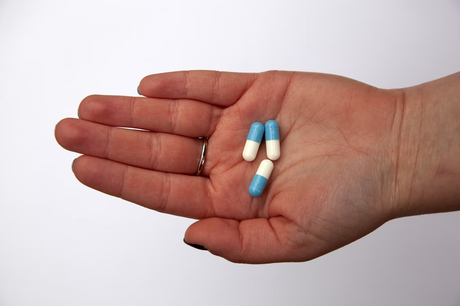
In the past, medical professionals handed out antibiotics for acne like hot cakes. Back then, the theory was that bacteria on the skin lead to breakouts, so pumping people full of antibiotics long-term would help.
Unfortunately, that’s not what happened. Most people didn’t see much improvement in their acne and then went on to develop severe health conditions in the future.
Long-Term Antibiotics Don’t Cure Acne
Long-term antibiotic usage doesn’t cure acne. Doctors used to prescribe it to help reduce inflammation and swelling. But the root causes of acne actually have very little to do with bacteria in the skin.
The reality is that most people’s skin is chock full of bacteria. However, only a small subset of those individuals will develop any serious kind of acne.
The main drivers of acne are excessive oil production, clogged pores, and inflammation. Clogged pores occur when tiny hair follicles on the face fill with oil, dead skin cells, producing whiteheads and blackheads. During hormonal changes, including puberty, oil production ramps up significantly, increasing the likelihood of pores filling with oil.
Then there is inflammation, or the redness around zits. This occurs as the immune system tries to fight bacteria living under the skin. The deeper the oil and bacteria go, the worse the cysts.
The fact is this: antibiotics control bacteria growth (for a while), but they don’t deal with the other acne drivers.
The Downsides Of Taking Antibiotics For Acne
Taking antibiotics might help to relieve redness, but there are many downsides. For starters, long-term antibiotic use can permanently disrupt intestinal microbiota, leading to all sorts of bowel conditions and complaints. Worrying, bacteria may never recover, leaving patients feeling tired and sick for the rest of their lives.
Do antibiotics make you tired? The answer is “yes” for some common acne treatments, such as amoxicillin. This antibiotic makes people feel fatigued directly because of its drowsiness-inducing effects.
Treatments For Acne That Work
Fortunately, there are a host of acne treatments proven to work across many different types of people. Skin washes, for instance, that use salicylic acid or benzoyl peroxide kill bacteria on the surface of the skin, remove oil and dead skin cells, and unclog pores. Those with a sulfa base can also reduce inflammation and are generally less irritating for people with sensitive skin.
You can also try using topical retinoids. These products, derived from vitamin A, help to break down whiteheads and blackheads while also making dead skin cells less sticky so that pores can self-clean more easily. As such, they deal with the root of skin problems, by making the ground for acne to develop less fertile.
Lastly, you can apply topical antibiotics. This avoids many of the unwanted side effects that come with oral forms of the drugs.
Most doctors begin patients on skin washes and then, if that doesn’t work, move them onto topic retinoids. Then, if that doesn’t work, they add topical antibiotics to their skincare regimen.
In most cases, salicylic acid will kill unwanted bacteria at the surface, but problems emerge and bacteria go deeper into pores. Unfortunately, too much antibiotic use can lead to resistance, forcing patients to fall back on other methods to control their acne.
In general, doctors will only prescribe oral antibiotics for the most severe cases to get cystic acne under control. Once control is established, they will then revert to non-antibiotic treatment.
Diet And Lifestyle
While medical interventions offer treatment, what people living with acne really want is a lifestyle that prevents the condition. As you might expect, the majority of acne isn’t natural. In fact, much of it comes from the appalling lifestyles that the majority of people lead. Too much fat, sugar, dairy and meat in the diet all significantly raises the risk of skin inflammation, acne flare-ups, hormonal imbalances, excess oil production and so on
Cutting back on sugar should be a top priority, according to many acne researchers. Patients should avoid drinking sodas and other drinks that are likely to make them more prone to inflammatory skin diseases.
People should also avoid waiting to treat their acne. If you get persistent spots around your face’s T-zone or on your cheeks, act immediately. If you can deal with it earlier, the more likely it is to disappear later in life.
Those who enter puberty earliest, at around age nine, are less likely to have acne in adulthood. However, those who begin later, around 15 to 17, may have acne well into their twenties and beyond.
Thank you for reading!


